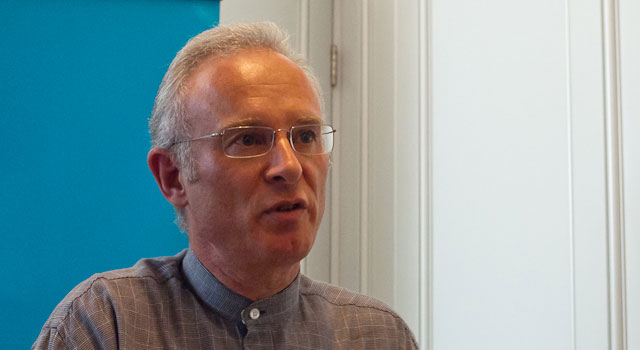
SA consumers are becoming more confident about transacting and banking using mobile devices. This applies both to users of high-end devices and entry- to mid-tier devices, new research from World Wide Worx shows.
Although most cellphone banking is still conducted via text messages, more than a third of customers of these services are now also using phone browsers for their banking. Only 5% of cellphone bankers exclusively use phone browsers for the purpose, but a further 36% use the browsers as well as text-based services like USSD and SMS.
According to the study, the single most popular transactional service in cellphone banking remains airtime purchases, with 74% of customers using it for this purpose, and only 15% paying accounts via their phones. Phone-based purchases via the phone of physical products that are delivered to the buyer are made by only 4% of urban cellphone users, but by no rural users whatsoever.
As anticipated, the Mobility report, released on Wednesday, shows data is gradually attracting more consumer spend that would traditionally be allocated to voice calls, but at a lower rate than expected, in part because of the relatively small number of smartphones in the SA market.
World Wide Worx MD Arthur Goldstuck says the proportion of data spend has grown by 50% since 2010, from 8% of total spend to 12% now. He says 59% of the 1 200 people sampled now have Internet access of some kind or another, with 27% having a combination of cellphone and desktop or laptop access.
Only half of Internet access in SA is mobile only, says Goldstuck. The research found that the amount of time spent online via a desktop or laptop is almost commensurate with the amount of time spent online using mobile devices.
Google accounts for the majority of searches from mobile devices and Facebook remains dominant at 78% of social networking from mobile devices. FNB’s mobile site is the most used among those who bank from their phones at 15% of the total, followed by Absa and Standard bank with 7% each.
“The urban/rural divide shows itself most blatantly when it comes to satisfaction with getting online via mobile devices,” says Goldstuck.
Rural users report far lower satisfaction in terms of getting connected, report poorer download speeds and lower satisfaction with the cost of data and assistance offered by service providers.
“E-mail usage has increased dramatically, up from 28% in 2010 to 38% today,” he adds. In 2010, each user had an average of 1,5 e-mail addresses. Today, that has risen to two. He attributes this to people having a work and personal address. While almost 50% of urban users have e-mail access, only 19% of rural users have an address. This is across the board, not just on mobile devices.
Goldstuck says cameras and FM radios are the most used features of handsets across SA, followed by Internet browsers, music players and games. Rural usage of all mobile phone features is lower than that found in urban areas except when it comes to FM radio.
There has been less growth in Internet browser usage than anticipated and Goldstuck says this points to a sharper growth curve in years to come.
Facebook use has grown by 50% since 2010 and is the single most used social media service on handsets in SA.
“Eighteen months ago, use of [instant messaging service] WhatsApp was so low we couldn’t measure it,” Goldstuck says. “Now, 26% of users whose phones support it use it.”
This is partly because Nokia promotes WhatsApp as an alternative to BlackBerry’s proprietary BlackBerry Messenger (BBM). BBM is on 18% of users’ phones, with the vast majority who have access to it using it. Goldstuck says these figures account for the stagnancy of Mxit since 2010.
Use of Twitter has doubled since 2010 to 12%, but is still tiny compared to the 38% enjoyed by Facebook.
Mobile TV is used by less than 1% of cellphone owners. Each year’s report shows a large number of people say they intend to start using mobile TV, but few actually doing so.
Users who consume the most data are aged 16 to 18. This usage declines the older users are, and at the same time average expenditure increases.
Unsurprisingly, Vodacom and MTN account the majority of primary accounts, with Virgin Mobile and 8ta only seeing any real traction as secondary accounts.
Nokia accounts for half of the handsets in SA. Samsung and BlackBerry account for 18% each. Apple’s iPhone accounts for only 1%. Although Nokia has remained stable in recent years, BlackBerry ownership has skyrocketed, with Motorola declining sharply.
About 68% of SA consumers had bank accounts in 2010, and that figure has grown to 75%. More than a quarter of those, 28%, say they are using cellphone banking. Nearly 75% of people who use cellphone banking use it to purchase airtime.
Less than 10% of SA mobile handset owners say they have used a mobile money service in the past three months, with FNB’s eWallet accounting for half of these and Absa’s CashSend accounting for a third. M-Pesa’s market share is just 4%.
The most popular reason for using these services is to send money to family members, while the most frequently cited reason for not using it is a lack of need to do so.
Of those surveyed, 84% were prepaid users, 7% were on contract and 9% were using top-up options. — (c) 2012 NewsCentral Media




